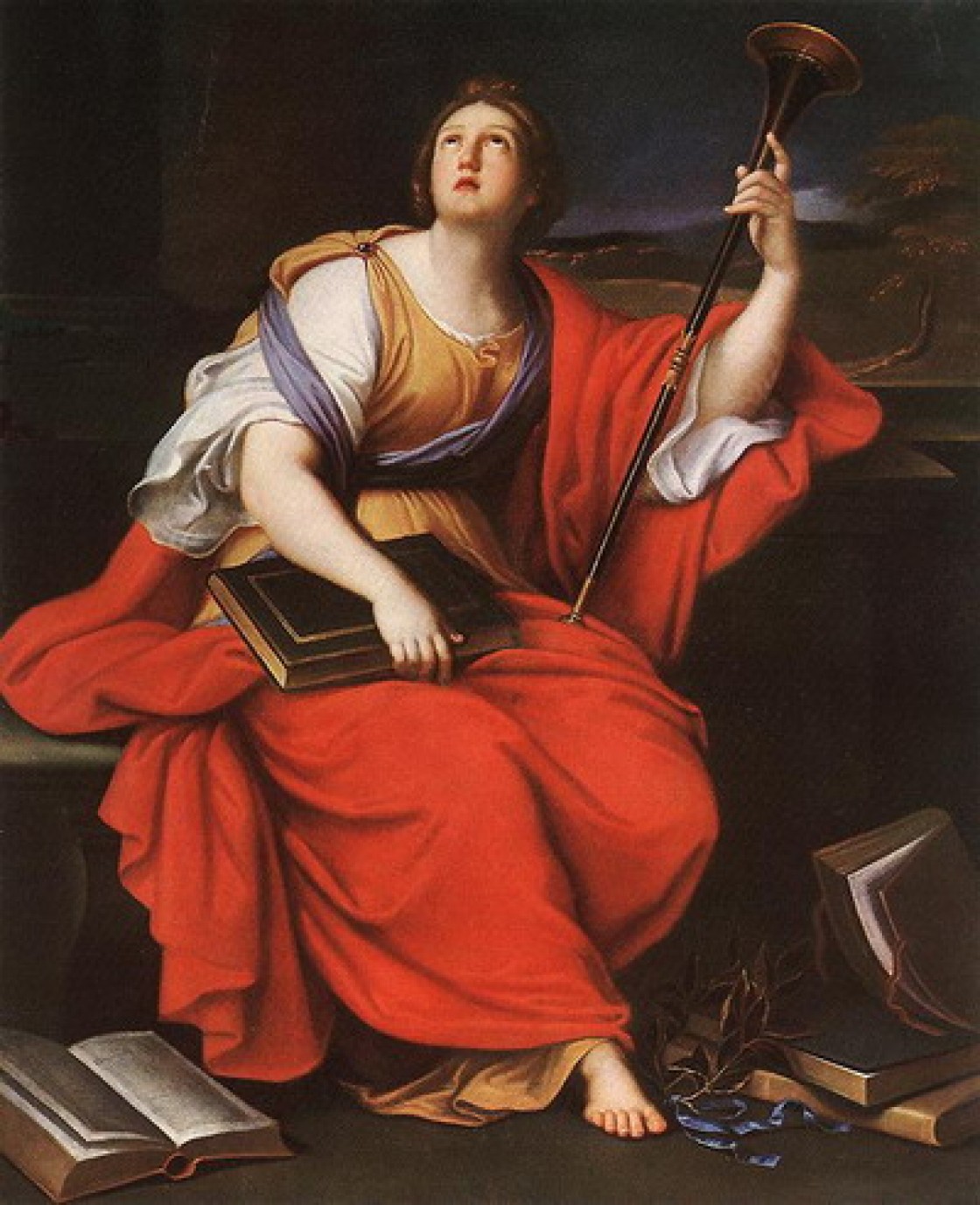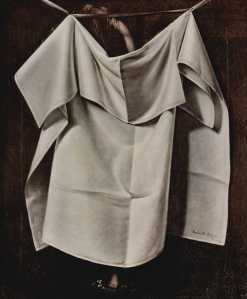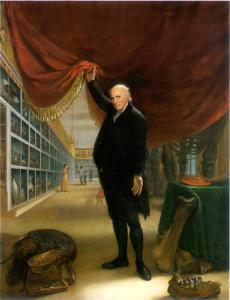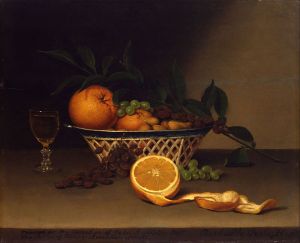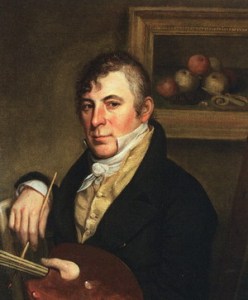I first learned of Raphaelle Peale in an American art history class at UC Santa Barbara, circa…early 2000s. As a fan of tromp l’ oeil (trick-of-the-eye), it was his most famous work, Venus Rising from the Sea–A Deception (1822) that first caught my attention. However, Peale’s prolific and haunting still lifes are what truly captured my heart.
Raphealle Peale, Venus Rising from the Sea–A Deception (1822)
Uh-oh, here it comes…history (of course)! Peale (1774-1825) came from an artistic family, headed by his father Charles Wilson Peale. Peale Sr. was a very famous artist and naturalist in his own right, and is most known for founding the Philadelphia Museum in the early 1800s.
Charles Wilson Peale (Self Portrait), An Artist in his Museum, 1822
Raphealle was the black sheep of the family and never fully achieved the success of his father or even his brother, Rembrandt, in the art world. So, like any good outcast, he purposefully painted still lifes, which were deemed one of the lowest forms of art at the time, to bother his father. (Wikipedia doesn’t even list him as an artist on Peale Sr.’s page, only his brother who painted portraits–deemed the highest caliber of art and skill–like their father.)
Raphealle Peale, Still Life with Cake, 1822
Peale utilized the medium of still lifes to reflect his life, and, therefore, they can essentially be viewed as his own form of self-portraiture. For example, he often played on his last name ‘Peale’ by showing peels of fruit. All still lifes are more than just pictures of food captured in time, and many reflect the mortality of life. Peale especially, who contracted gout in 1808 and was often very sickly, echoed this in his paintings. Images depicting moldy fruit, flies, and even transparent gauze remind the viewer of the transitory nature of life: all luscious fruit and delicious cakes will eventually rot.
Still Life with Oranges, 1818
Melons and Morning Glories, 1838
I am not sure why Raphealle Peale’s story and art captivate me so. Aside from the ethereal quality, there is also deep sadness and pain behind his works. The works reflect a longing for acceptance from our parents and society that we all can relate to. Anyone suffering with a chronic illness, or has learned first-hand the transitory nature of life, can also appreciate how powerful his still lifes truly are. The fact that he still does not get much credit as a painter (as when he was alive) also adds to the tragedy. Yet, for the few that know of him (and now you do too!) Rapehealle Peale makes an impression that lasts for a lifetime.
(Oh, what I wouldn’t give to have one of his gems on my wall!)
Charles Wilson Peale, Portrait of Raphaelle Peale, 1822
(notice the still life in the background!)
